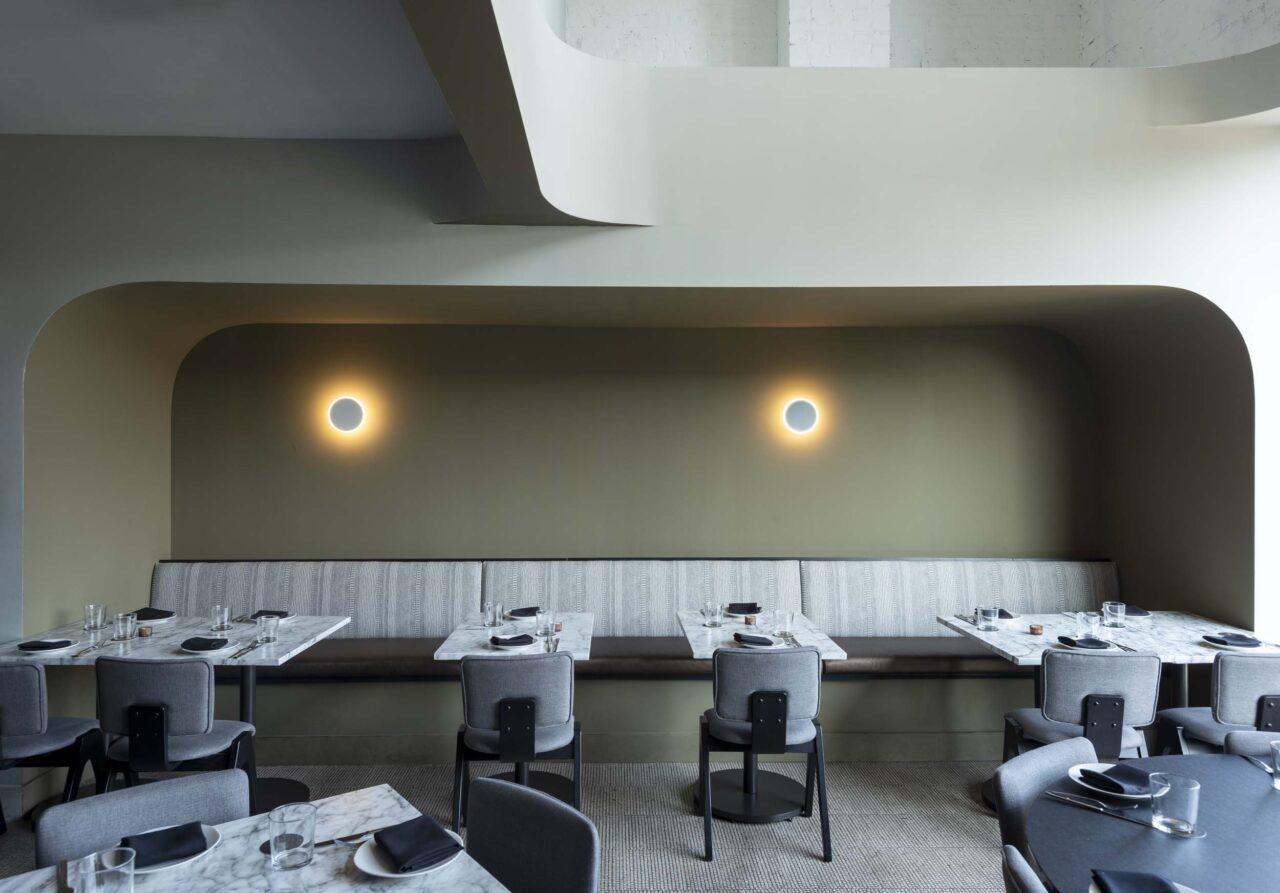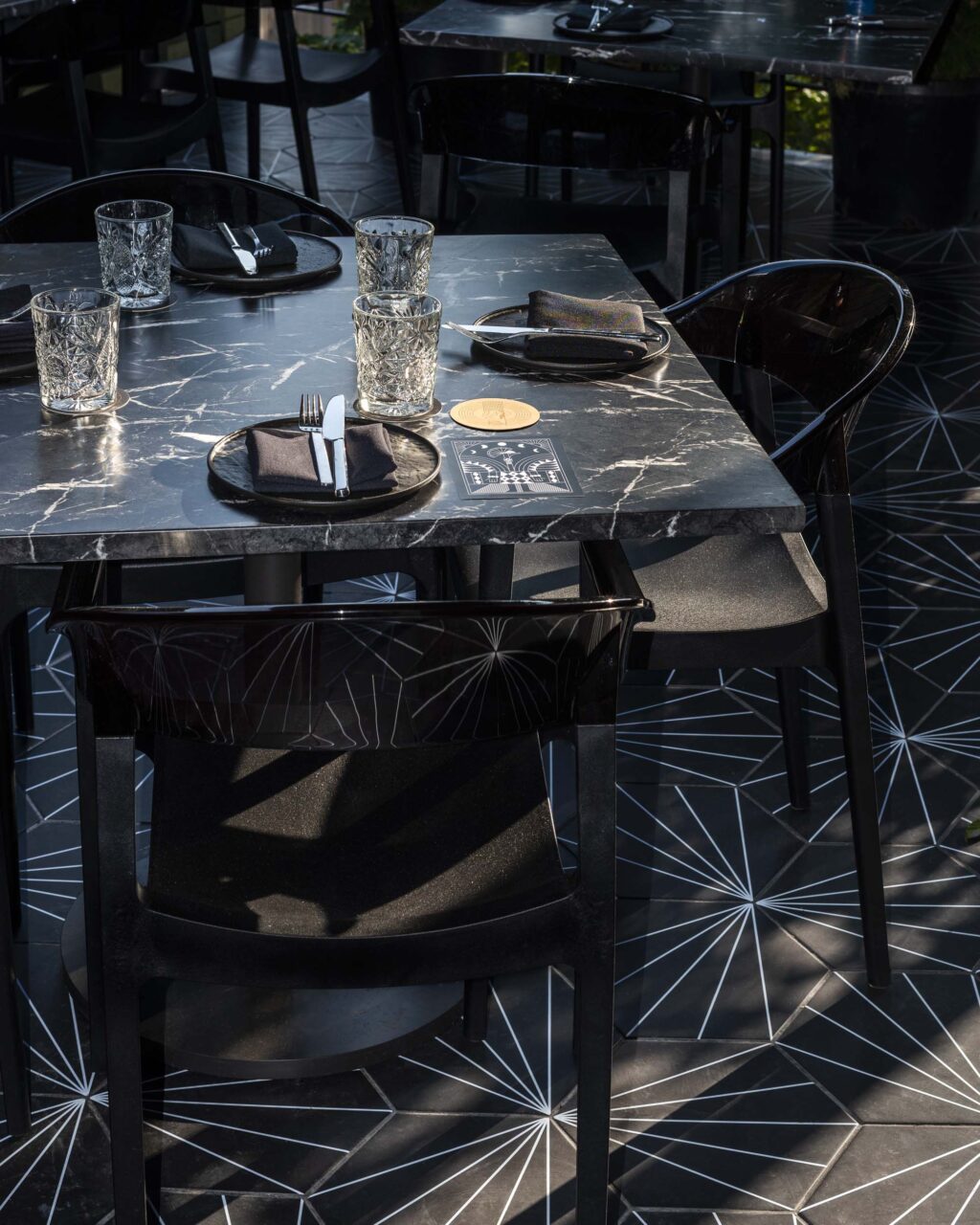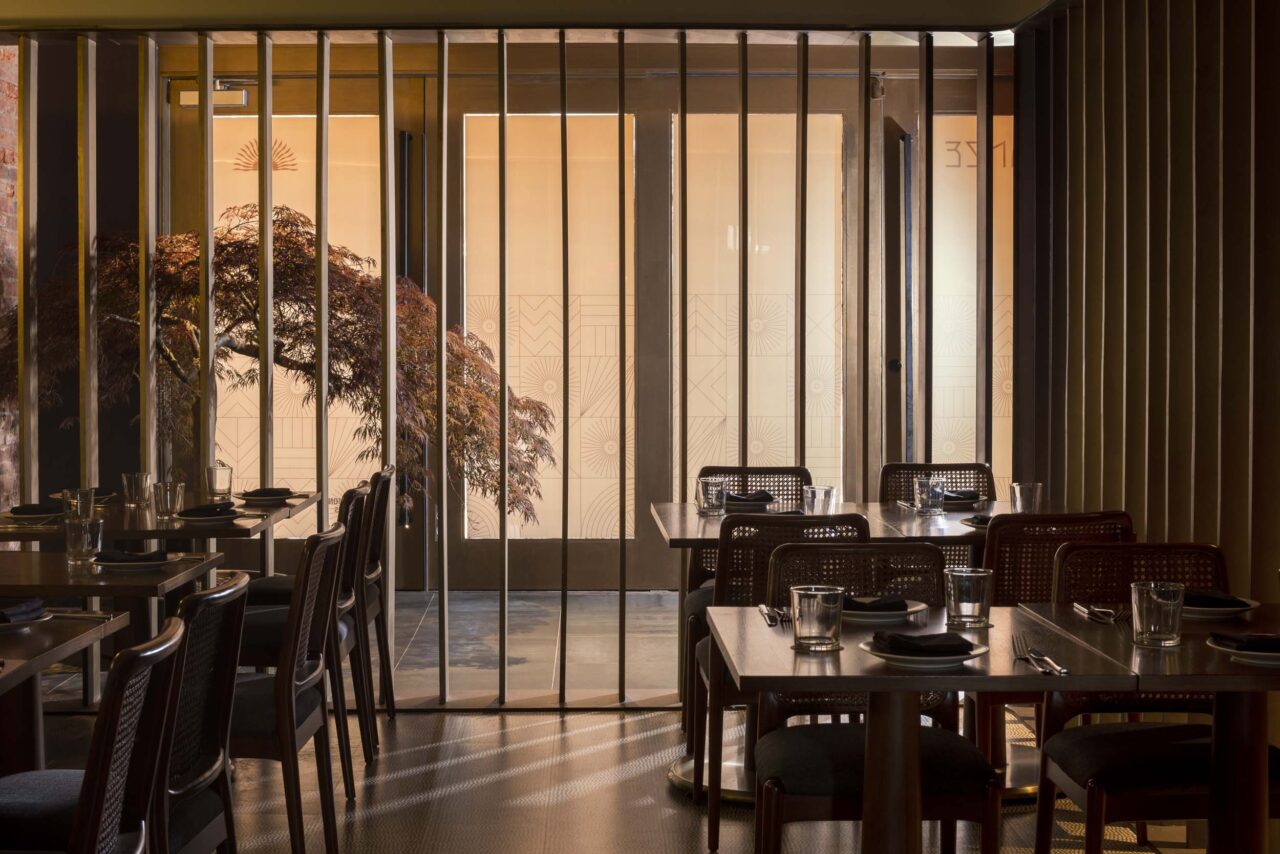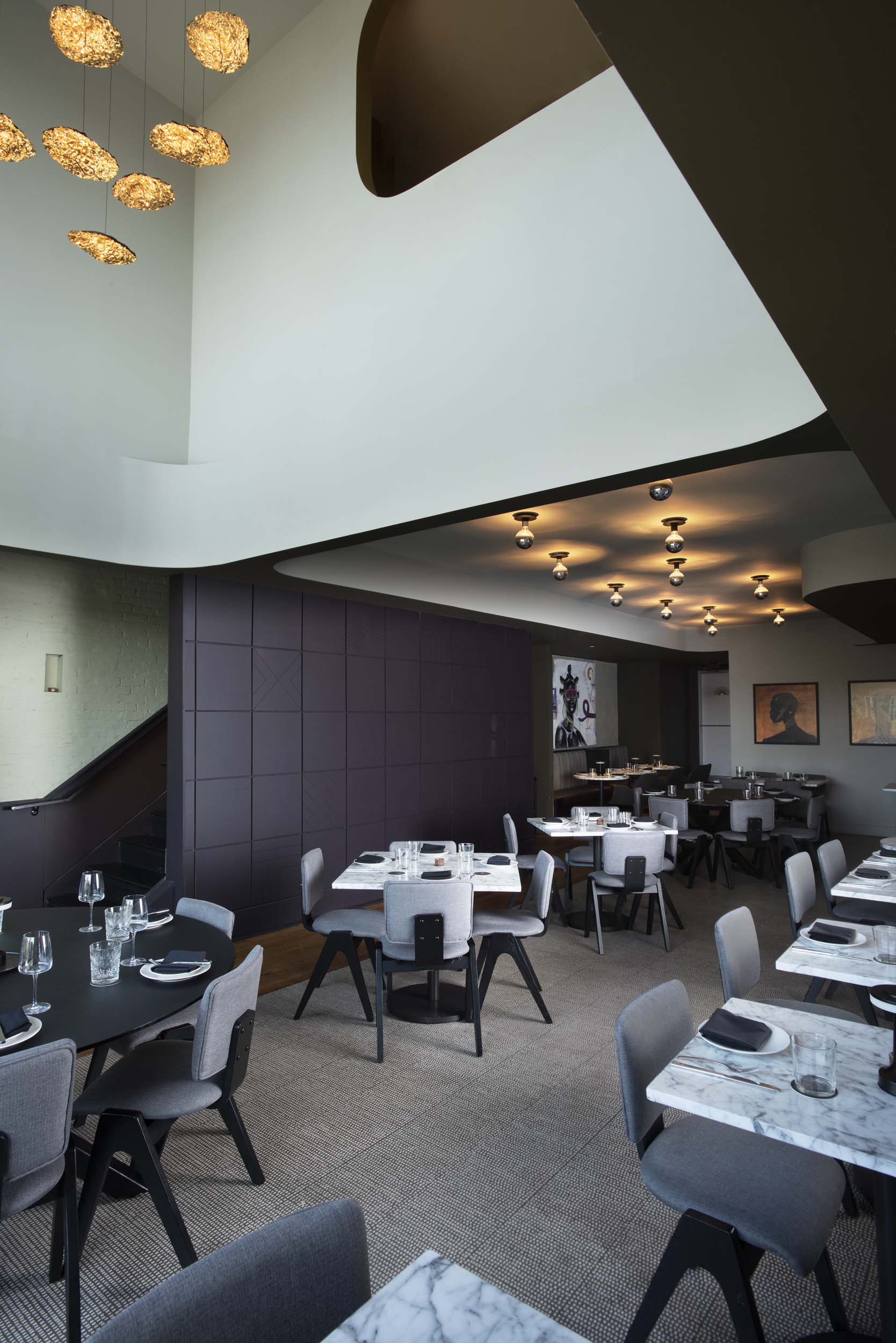For the design of Bronze, a moody, futuristic eatery in D.C., local firm Drummond Projects began with a sci-fi story. “Chef Keem Hughley’s menu is a nod to a fictional character, Alonzo Bronze, a Black 14th-century visionary and traveler,” explained principal designer Jimmie Drummond. “We asked, how can the design inspire a reimagined embodied cultural memory for the future?” The result is an immersive spatial expression of an Afro-futurist culinary experience—one that transports diners to a fantastical and richly textured world.


Just as Bronze’s menu reconceptualizes Afro-fare in a way that looks forward to a bright future, the design of the 6,800-square-foot space amalgamates historical elements and cultural references in a way that feels novel and fresh. Leopard-print upholstered booth seating and African motifs on walls and tiles (like the grey crowned crane) nod to the African diaspora. Meanwhile, modern furnishings and finishes, including Valchromat, a fibrous wood product with a velvety and stone-like finish, bring the space squarely into the present.



“I think people today are compelled by immersive, unique experiences,” said Drummond. “More than a restaurant, Bronze invites guests to adventure with gastronomy and architecture. It sparks contemplative narratives about food, design, history, and culture.”
